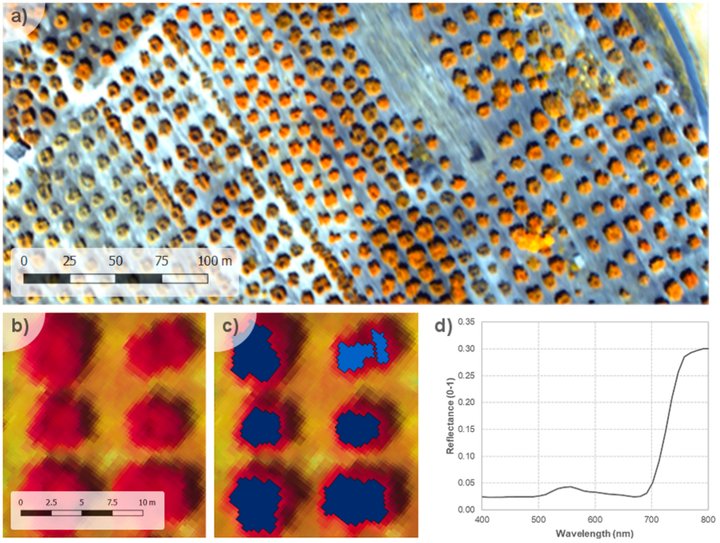Detection of Xylella Fastidiosa Infection Symptoms with Airborne Multispectral and Thermal Imagery: Assessing Bandset Reduction Performance from Hyperspectral Analysis

Abstract
Xylella fastidiosa (Xf) is a harmful plant pathogenic bacterium, able to infect over 500 plant species worldwide. Successful eradication and containment strategies for harmful pathogens require large-scale monitoring techniques for the detection of infected hosts, even when they do not display visual symptoms. Although a previous study using airborne hyperspectral and thermal imagery has shown promising results for the early detection of Xf-infected olive (Olea europaea) trees, further work is needed when adopting these techniques for large scale monitoring using multispectral cameras on board airborne platforms and satellites. We used hyperspectral and thermal imagery collected during a two-year airborne campaign in a Xf-infected area in southern Italy to assess the performance of spectrally constrained machine-learning algorithms for this task. The algorithms were used to assess multispectral bandsets, selected from the original hyperspectral imagery, that were compatible with large-scale monitoring from unmanned platforms and manned aircraft. In addition, the contribution of solar-induced chlorophyll fluorescence (SIF) and the temperature-based Crop Water Stress Index (CWSI) retrieved from hyperspectral and thermal imaging, respectively, were evaluated to quantify their relative importance in the algorithms used to detect Xf infection. The detection performance using support vector machine algorithms decreased from 80% (kappa, $ąppa$ = 0.42) when using the original full hyperspectral dataset including SIF and CWSI to 74% ($p̨pa$ = 0.36) when the optimal set of six spectral bands most sensitive to Xf infection were used in addition to the CWSI thermal indicator. When neither SIF nor CWSI were used, the detection yielded less than 70% accuracy (decreasing $kp̨a$ to very low performance, 0.29), revealing that tree temperature was more important than chlorophyll fluorescence for the Xf detection. This work demonstrates that large-scale Xf monitoring can be supported using airborne platforms carrying multispectral and thermal cameras with a limited number of spectral bands (e.g., six to 12 bands with 10 nm bandwidths) as long as they are carefully selected by their sensitivity to the Xf symptoms. More precisely, the blue (bands between 400 and 450 nm to derive the NPQI index) and thermal (to derive CWSI from tree temperature) were the most critical spectral regions for their sensitivity to Xf symptoms in olive.